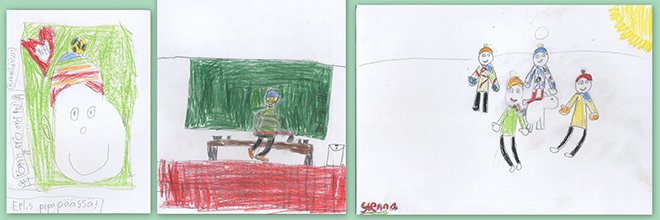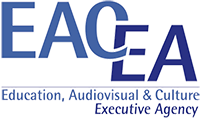Koskelan Koulu (primary school) - Finland
Region: Oulu
Other schools in the Quint Blog: Magic Hill (Czech Republic),Escola Frei Bartolomeu dos Mártires (Portugal), Mater Dei National School (Ireland), Shottermill Junior School (UK)
Creative Connections project: Me as a European
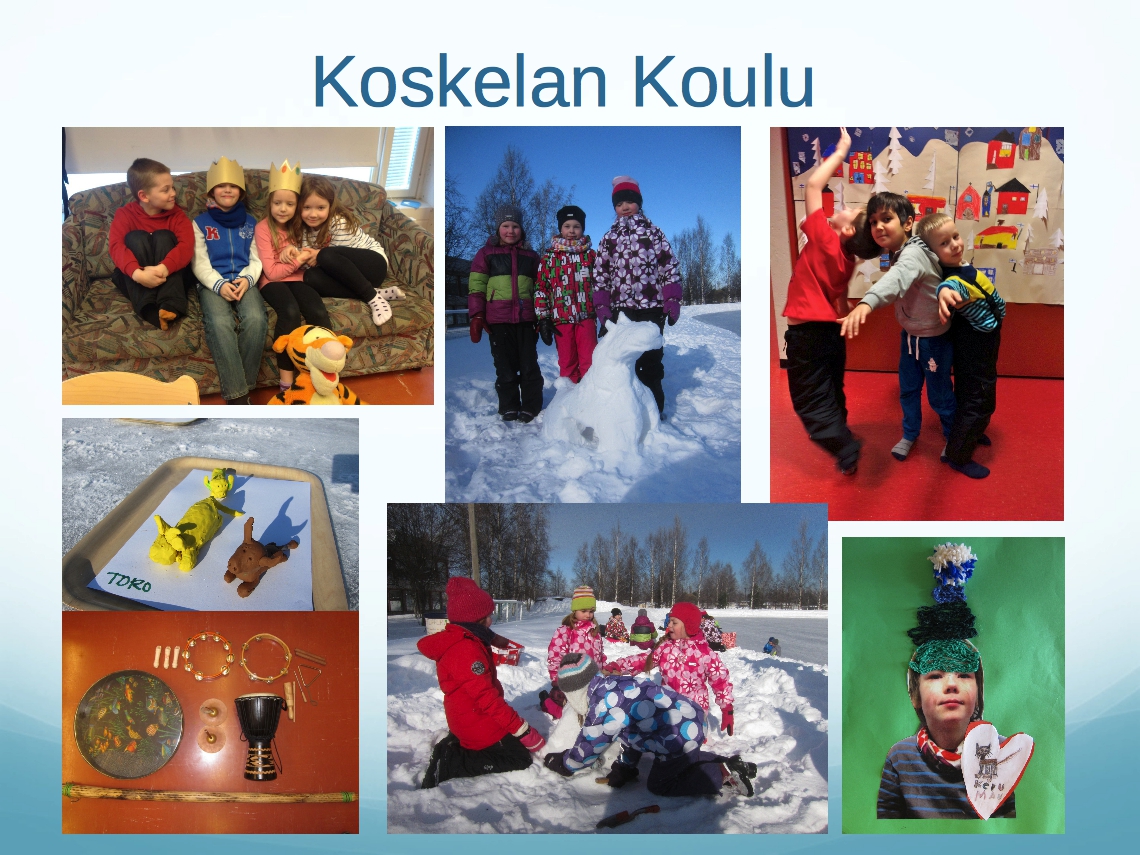
The Koskelan School is located in the Oulu city area, a few kilometres from the city centre. Situated in the northern part of the country, Oulu is one of the biggest cities in Finland with 190,891 inhabitants. The school is multicultural with 264 pupils from age 6 to 13. The poster in the school hall presents the different original home countries of the pupils. Every 5th pupil has a mother tongue other than Finnish. The participating class for the Creative Connections Project was1st grade with 18 pupils, 7-8 -year-olds. They worked on the project from 20th January to 13th of May 2012.
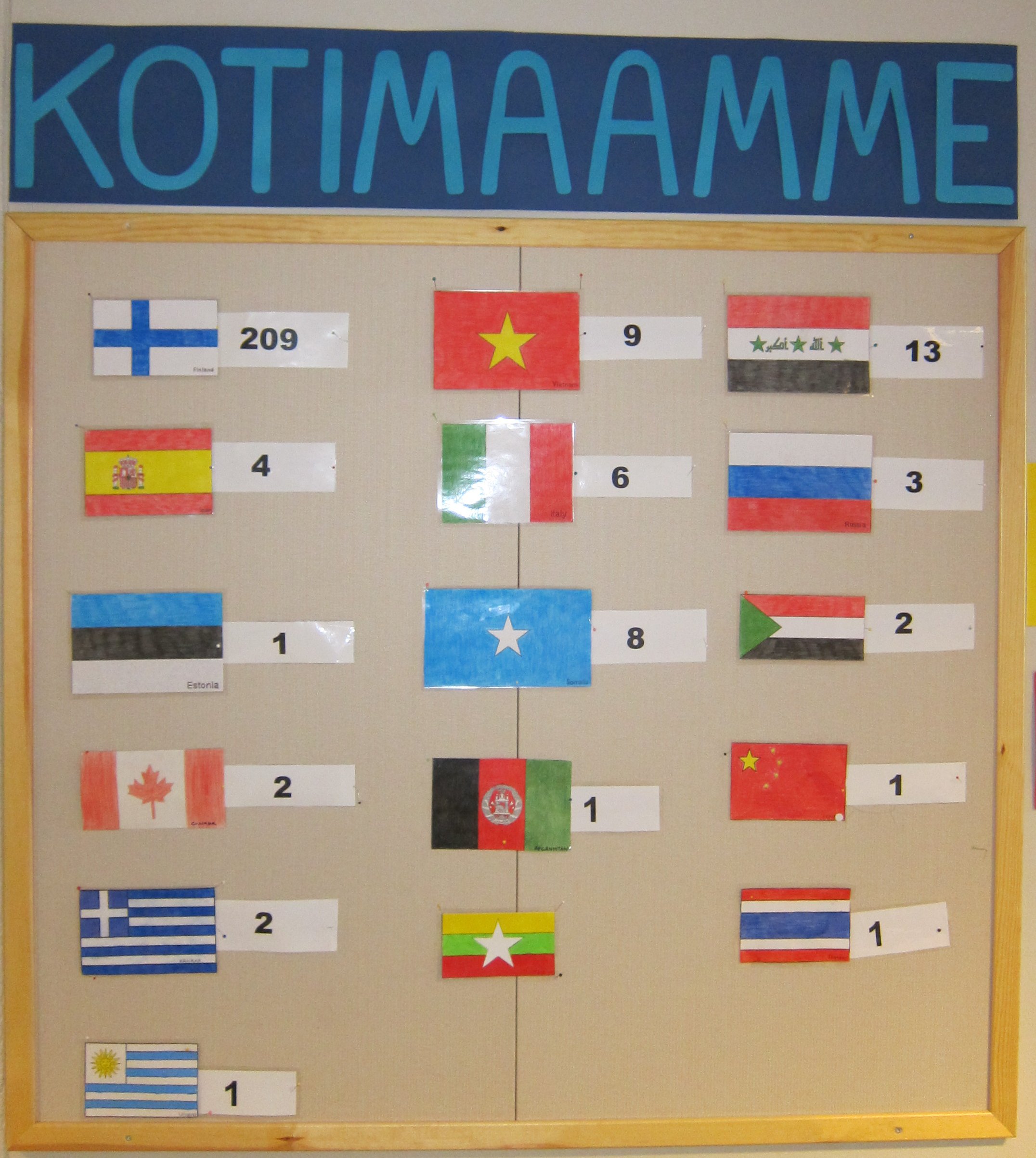
Special issues
The pupils of the participating class are just learning to read and write, so the blogging was carried out by the teacher and a researcher. The teacher said that for the pupils it would take a lot of time to write using a keyboard, since they were not able to type. The Quad Blog and postings were looked at together with the class with a video projector, so that they saw their own work and the postings of others on the blog. The blog was also used with iPads to look at the artworks in the Connected Gallery and to research information about the other countries. Four iPads were available for the whole class to use in small groups. The teacher wrote down, translated and posted the pupils’ comments. Because of this blogging arrangement, most of the works were done in groups to keep the amount of postings of pupils’ work manageable.
Teacher comment
The learning of blogging would have taken too much time. There was not enough purpose in pupils’ blogging themselves as it would have not been worth the challenge of teaching it. The blogging was also already challenging for the teacher.
The teacher was the only class teacher/general educator participating in Creative Connections from Finland. She has specialised in sports and dance while the other teachers have art teacher educations. For this reason the assignments were planned in co-operation with researcher and art teacher who visited the class four times during the spring term. The school was visited six times in total with visits of from researcher who was a master’s student and the professor/researcher who also interviewed the pupils on their visits. The project was documented using video cameras and photos of pupils’ working. At the end of spring term the teacher and pupils were interviewed (sound recorded) and as a form of evaluation the pupils made drawings about the most memorable part of the project for them.
The Creative Connections Project: Aims and Framework
The aim in planning the unit of art activities was to bring together the expertise of the primary teacher and art educator. The Connected Gallery gave the students the possibility of using contemporary art in lessons more than usual and made them concentrate on the activities to approach and explore the art works in different ways. The other focus was in exploring the other Creative Connections countries and their cultures. The teacher was interested in making snow sculptures, with the possibility to get the know-how and tools from the University of Lapland through collaborating together. The researcher proposed developing sound work based on the teacher’s skills in music pedagogy and with the possibility to getting technical support from a music teacher for recording and editing the sounds.
Assignments
- Introduction to the Creative Connections: Pupils looked for information about the other Creative Connections countries with iPads and drew their research notes.
- Friendship Tree: Exploring different languages through word the ‘friend’; this topic was selected by the class together.
- My Woolly Hat: Auto-portrait – An individual assignment.
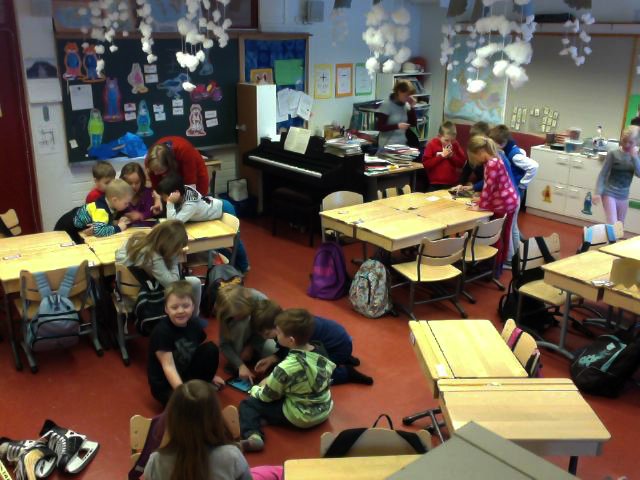
- Own versions of the artworks: Photography assignment using art from the Connected Gallery (Michael de Brito: The Gathering, From Zero to Hero: Singh Twins, Raakel Kuukka: Rebecca and a national dress, Petri Hytönen: Finland – Sweden.)
- Snow sculptures: Sculptures made as gifts for the other Creative Connections countries. (Related to Timo Jokelas work Fathers' Signs in the Connected Gallery, and Jokela's snow sculpture in Oulu city center at that time).
- Soundscapes: Sounds inspired by two art works in the Database, composed to sound work and recorded (Jaakko Heikkilä: Mirja by the River and Eduard Ovčáček: Signs).
The assignments were made during 10 x 2 lesson sessions (one lesson = 45 mins). Most of them involved the children working in groups. So co-operation skills became part of the learning targets. From the teacher’s point of view the 8 year olds had just started to learn how to work in groups.

Teacher comment
The class did unusually many group works for art lessons, but they learned co-operation skills. The assignments were different than normal art assignments. Still, we were able to include many things from the art curriculum to the assignments. The words and animals are something concrete related to the project countries that the 1st grade pupils can comprehend. And the words worked as ‘language shower’. Also the background information and planning of the works were made in groups.
The use of the Connected Gallery
The artworks from the Connected Gallery were a starting point for most of the pupils’ work. The artworks used were chosen by the teacher (for the soundscapes, snow sculptures) or the researcher (for the own photographed versions/responses) and analysed and discussed together with the class at the start of the activity. The selection of work was made because of their suitability for the planned activities and relevant for the pupils’ young age.
Teacher comment:
Due to the Connected Gallery and the project, contemporary art works were used in class more than usual and in different ways. The chosen artworks have had some connection to the children's everyday lives. Fortunately there was that type of artworks available. Estimating the artworks' size and technique was more challenging from the digital picture. In the snow sculpture photographs it was demonstrated with the person in the picture.
I could imagine using the Connected Gallery in the future. My colleagues would be interested in the Connected Gallery and the assignments are possible to apply to their classes, but the Connected Gallery must be publicly available on the website so that they could actually use it.
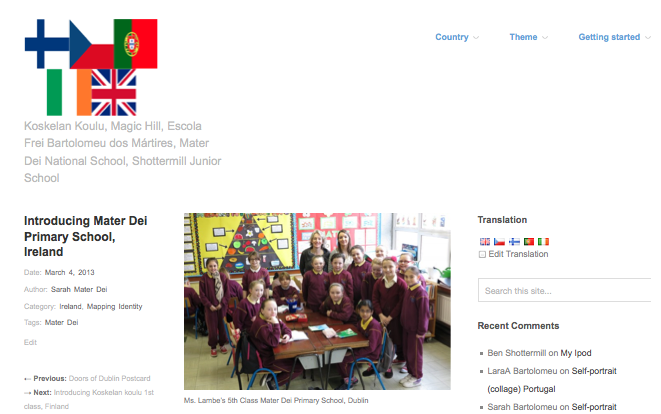
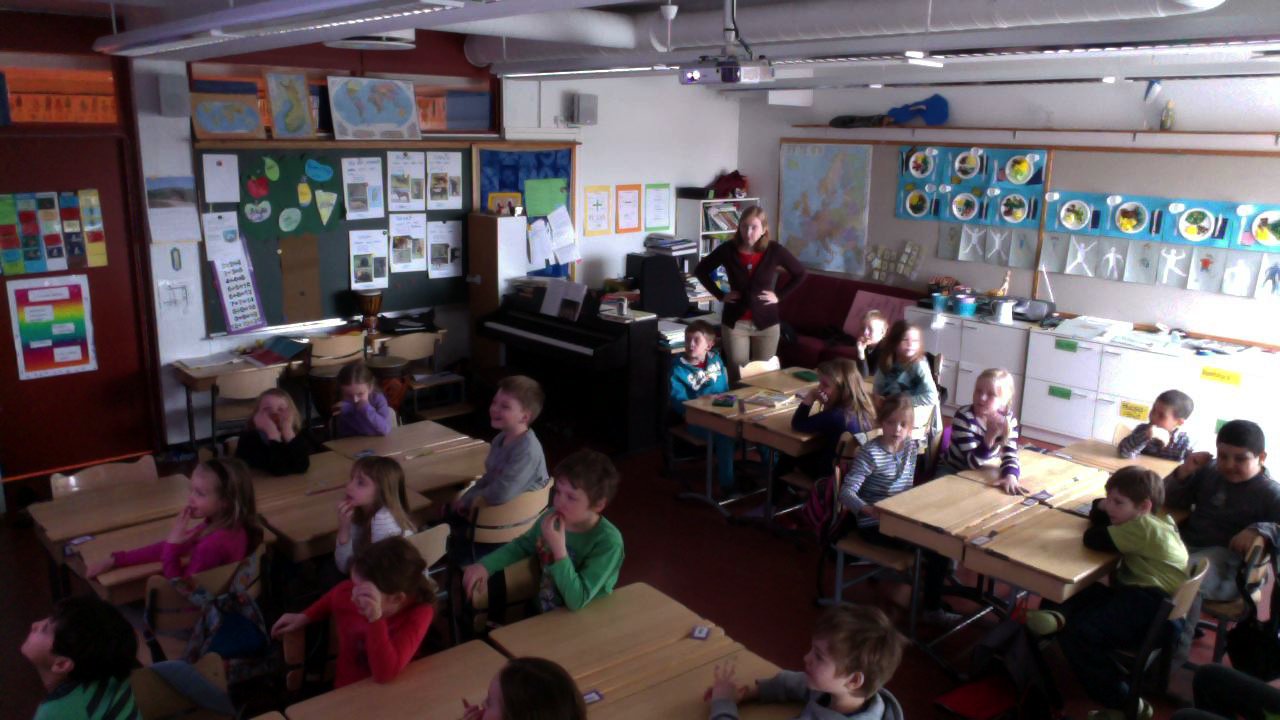
Pupil comment
Making the own version of the artwork was one of the most fun assignments, when getting to pose as royal family/ hockey player/dinner party.
Identity and European citizen themes
The project was started by searching for information about the other six Creative Connections countries. Pupils drew flags, instruments, monuments, and other found symbols. The other countries were also studied from the language point of view. Pupils decided to look for word ‘Friend’ in different languages. There were Irish visitors in the school due to another Comenius project and they helped for their native language part. For the snow sculptures, the pupils looked for typical or emblem animals for each country. Own identity was included in the Woolly Hat portrait assignment where the pupils drew their dream or important things inside a heart in the picture. Related to the assignment, the class discussed the importance of warm clothing in the Finnish climate and the differences to that around Europe.
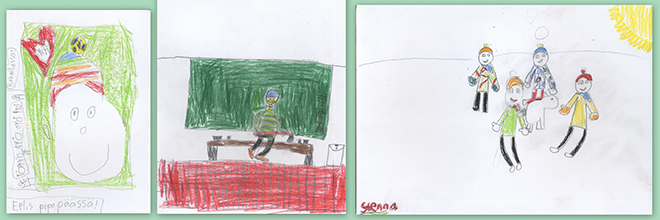
At the start of the photography assignment, the four artworks were analysed with the pupils. With questions like:
- Who is in the image? Why they are presented as royals and who would have the same status in Finland? (Singh twins: From Zero to Hero)
- What sport they would play in other countries? (Petri Hytönen: Finland – Sweden)
- What the people are eating? What would be an ordinary meal in Portugal? (Michael Brito: the Gathering).
The pupils were guided to explore the Finnish cultural features and to think about the equivalent customs and features in the other countries.
The things they learned about other countries were quite concrete and suitable for the young age of the pupils. One thing they noticed from the other blog postings were the use of school uniforms, which is not a custom in Finland. (This was one thing they mentioned, when asked what they learned about other countries).
Pupil comment
How does the teacher recognise the pupils from one another when they all dress the same way?
Teacher comment
The information about the other countries has been a scratch on the surface. The pupils are also confused because of the other Comenius project with international co-operation on going at the same time. So they are mixing the two together. Still there are some ‘glimpses of light’ where it starts to unfold, like one pupil remembering the school uniforms. That there are some things left in their minds.
Teacher comment
The other classes and teachers in the quad blog were left quite distant and unclear. Some of them have just now started to post in the blog. With a longer period there would have been time to get to know the others and blog in peace. The ideal way would have been meeting the teachers before starting to blog and decide the blog groups according to the age of pupils and interests.
Blogging
Blogging was handled by the teacher and the researcher and the postings were made after the lessons. This decision was made with the teacher in the beginning since teaching the use of the blog for such young pupils would have taken too much time. The Quad Blog was looked at several times with the whole class (using a projector), so they all could see the other works, artworks from Database and their own published work. Pupils discussed and decided together what to comment. Posting four group works was a satisfactory task, but photographing and posting 25 individual drawings (The My Woolly Hat work) was quite demanding for the teacher. Pupils also took photos by themselves with the iPads and also studied the Connected Gallery on the iPads. They were very interested in using this technology. In a big group using the iPads there was quite a hustle about whose turn it was to use the equipment. However, the pupils had more enthusiasm than skills.
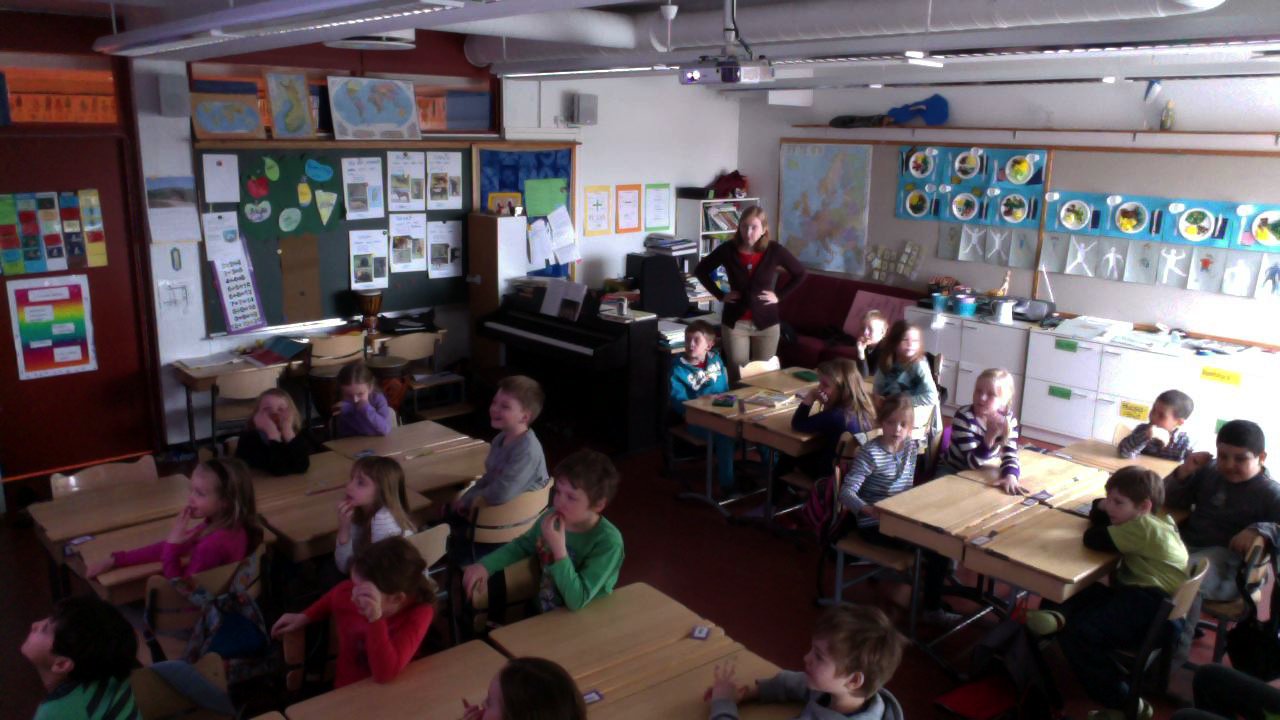
The teacher had a lot of experience of international projects, so she preferred to write the posts directly in English. The postings were made on researcher's visits to the school so as to have the technical support. Later on the teacher, with more experience and confidence in using the blog, did the posting and commented on the others works and responded to the comments independently with the class.
Teacher comment
I would have been lost without the support. Maybe it's because of my level of computer skills, but I also think that the blogging environment didn't work so well. It wasn't logical. And there were also technical problems. The blogs were also created so late that there was no time to practice. In the end I feel that the blogs should have been used more for commenting and discussion with the pupils. The difficulty of the use has been one issue, but also only now has there been published more postings. We will continue the commenting now with pupils, but it stays at quite a shallow level, “what a nice work” and with questions what it is. So it's details from here and there. The pupils must have quite fragmented image of it.
Pupil 1 They have commented that our works are nice.
Pupil 2 Someone told that they had 2cm of snow during last night.
Pupil 3 And that was a nice work where someone had drawn his own room.
Reflections
In the end, the teacher and the pupils were happy about how the project developed. The way the assignments were planned together, with the teacher and researcher, at the start seemed to work well. The teacher was open to ideas and co-operation, and had good ideas (e.g. for the snow sculpture).The pupils also showed positive energy until the end of the project and worked well in groups. They completed their work in a short time. The result was more group work than usual with such young pupils as a result they learnt group working skills, as remarked on by the teacher.
The project team thought they had a nice experience of blogging, even without actually the children making posts themselves. Technical support for the blogging took the stress away from the teacher and posting did not take too much extra work. The pupils got their works finished even with time limits and were happy about the results. Also the teacher and researcher are content that the pupils' works were childlike, in a good way, presented the age and style of their authors; the ‘pupils’ voice’ in this case.
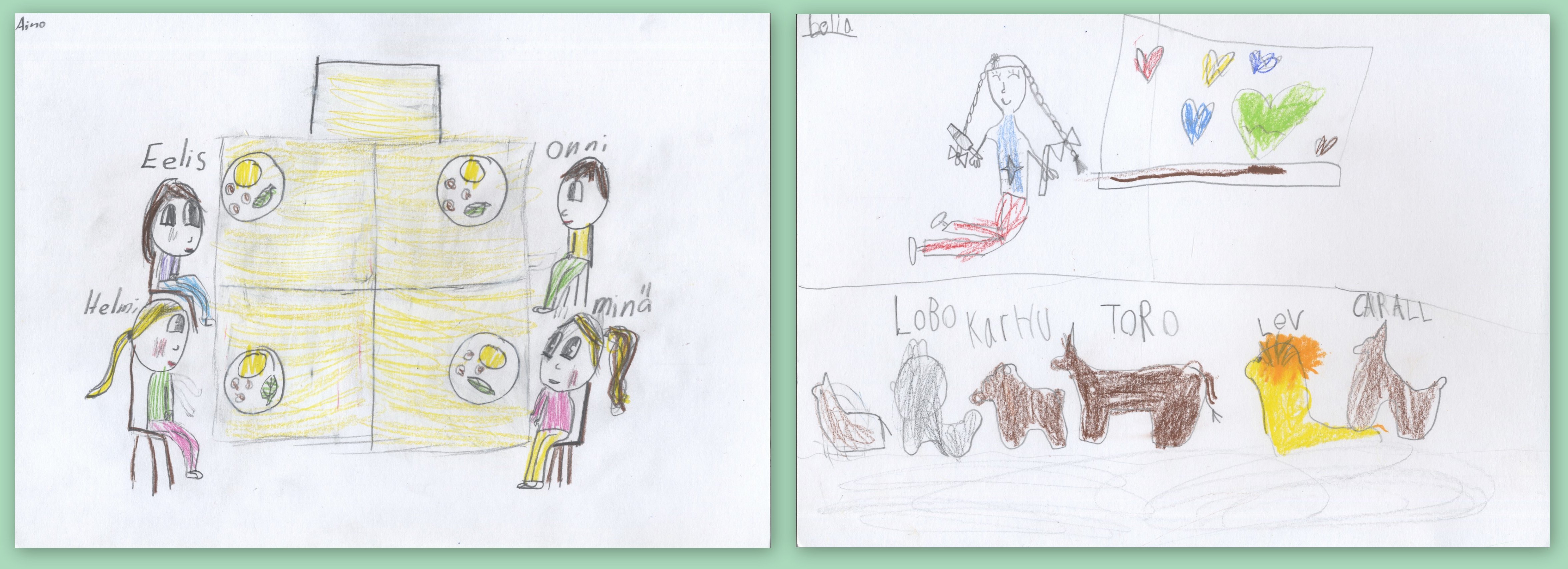
Their drawings are the most fun or memorable part of the project, the majority pictured the making of snow sculptures. But all the assignments are presented in the class’s drawings. Interesting details are well presented in snow sculpture tools (special tools lent from the university) and the writings included in the images.
Pupil response We love Europe!
The Creative Connections project gave a context and continuity to a series of art exercises. It also led to the process of exploring, planning, sketching and finishing the final product (for example in the snow sculpture process: choosing a suitable emblem animal for each country, finding images of the animal for model, modelling the sculpture in miniature from plasticine, making the snow sculpture and documenting the work). This was based on the pedagogical skills of the teacher but also a major part of learning targets: to learn art making processes and methods, while also learning to work in a group. The activities were playful approaches to exploring artworks through the use of different senses, the whole body and the techniques of arts and crafts. The aim of this multisensory way of working was to make the pupils’ experience the art by putting them into world of the image.
